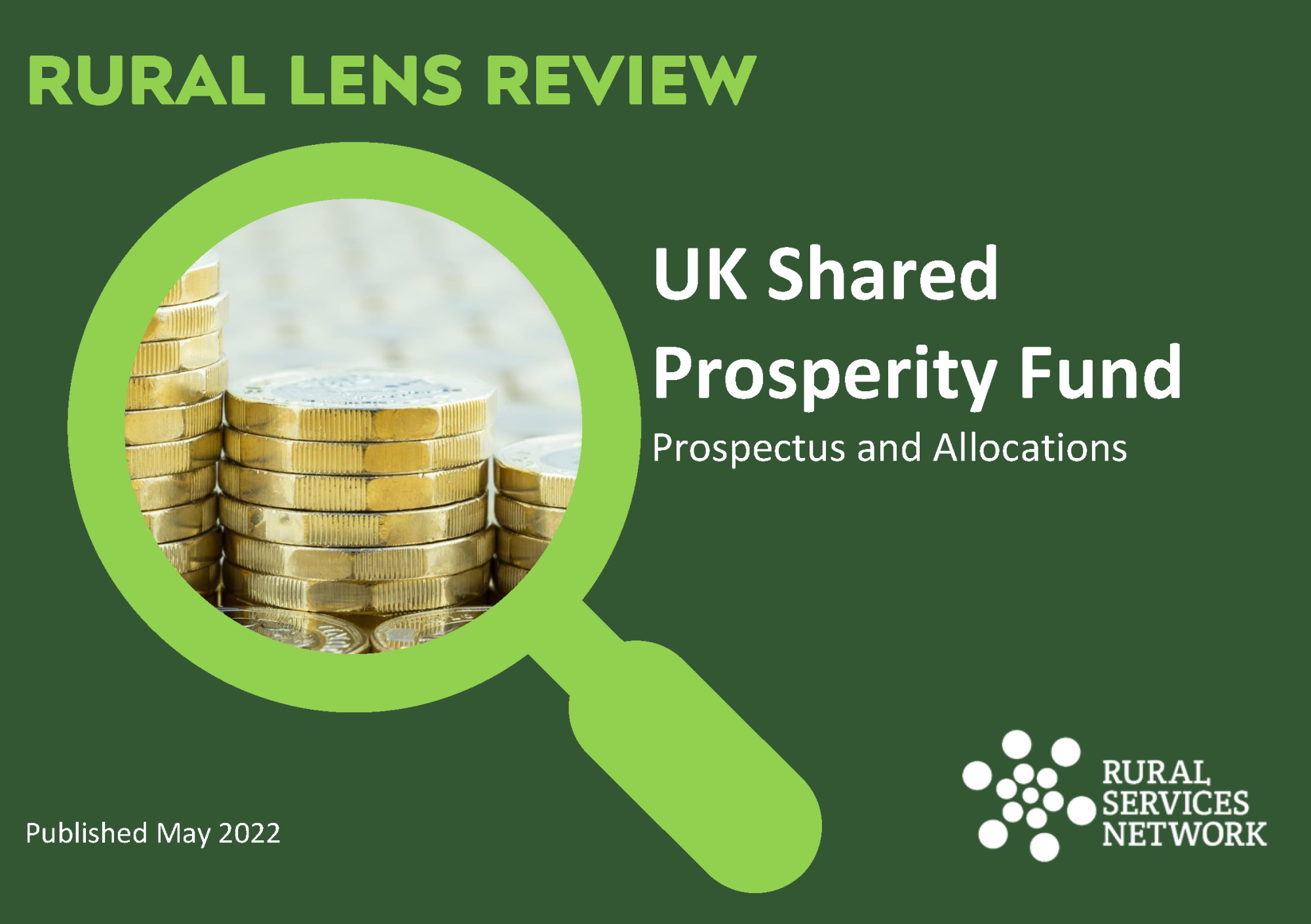T: 01822 851370 E: [email protected]
09.05.2022
Rural Lens Review of UK Shared Prosperity Fund Prospectus and Allocations
On 13 April Government published the eagerly awaited UK Shared Prosperity Fund Prospectus, to find out how rural communities have fared we have produced a Rural Lens Review of the Prospectus and Allocations.
Our key findings at a glance are as follows:
- The ‘Improving Public Services’ outcome sought will never be equitably achievable in rural areas unless and until all the funding formulae for the allocation of national funds to local authorities (and other public service organisations) are fair and reflect the additional costs of service delivery in rural areas.
- We welcome that through the Fund there will be developed an evidence base. If there is a specific effort to learn rural lessons, this could be a real opportunity, over time, to demonstrate what works in a rural context and will, we believe, also demonstrate that it costs more to deliver in rural areas and that less outcomes/outputs can be achieved from the same level of funding.
- That 70% is allocated on a per capital basis is, on the face of it good. However, it does mean that within that 70% there is no allowance for the extra delivery costs faced in rural areas. The RSN continues to argue that workplace earnings are a better measure than Disposable Household Income.
- We welcome the fact that the fund will be delivered through local authorities and that the fund can be used for revenue as well as capital purposes.
- The timescale for the preparation and submission of what must be very detailed Investment plans is incredibly short in practical terms. From the date of publication of the Prospectus to the end of the Investment Plan submission timeframe is around just 15 weeks (with Easter, May Day and the Jubilee breaks coming out of that). Given that “Lead local authorities are tasked with working with a diverse range of local and regional stakeholders, civil society organisations, employer bodies responsible for identifying local skills plans, and businesses or business representative groups to achieve Fund outcomes in their areas” and that “Members of the UK Parliament should be closely engaged in the design and delivery of the Fund” the timescale is particularly challenging. Again, we need to flag up the capacity constraints which rural authorities work under
- The members in our Rural Market Towns Group will be particularly disappointed that Local Councils are not specifically referred to in the list of the types of groups that should be represented on the local partnership groups.
- Given the large geographical size of rural District and Unitary authorities, they cover very many separate communities separated by distance. This presents many challenges in programme design and delivery. Within any rural district/unitary area there will be many different diverse local communities and actions proposed in one part of a district/unitary will not always (indeed rarely) have beneficial impact in other communities within that same district/unitary area due to the distances and geographies involved.
You can read the full Rural Lens Review including how much has been allocated and the methodology used by clicking on the image below:




